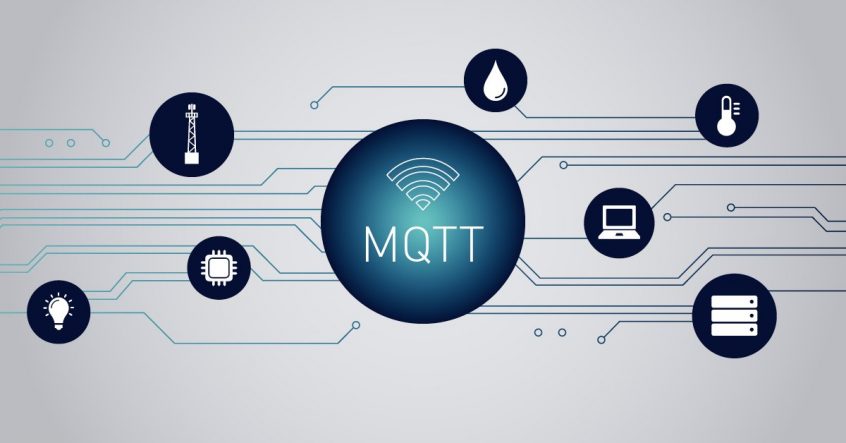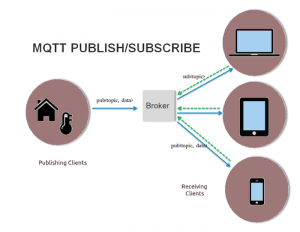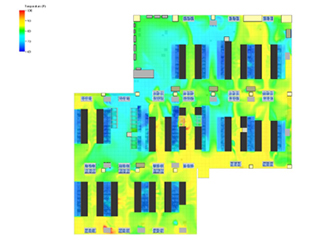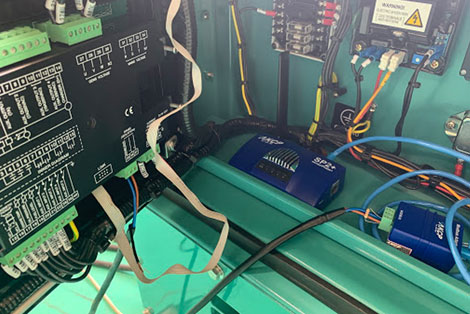MQTT and IoT go hand in hand in ensuring data relays are fast and efficient. Most IoT applications nowadays invest in good quality messaging protocols to provide connectivity. This connectivity facilitates the relay of information that is significant in a data center operation.
Because of MQTT’s lightweight nature, messaging is accommodated even in low bandwidth situations. Disconnections due to power fluctuation cannot disrupt the flow of data in an MQTT system. Such a communication channel provides integration from one device to another. Hence, technology correspondence is followed through.
The MQTT Protocol
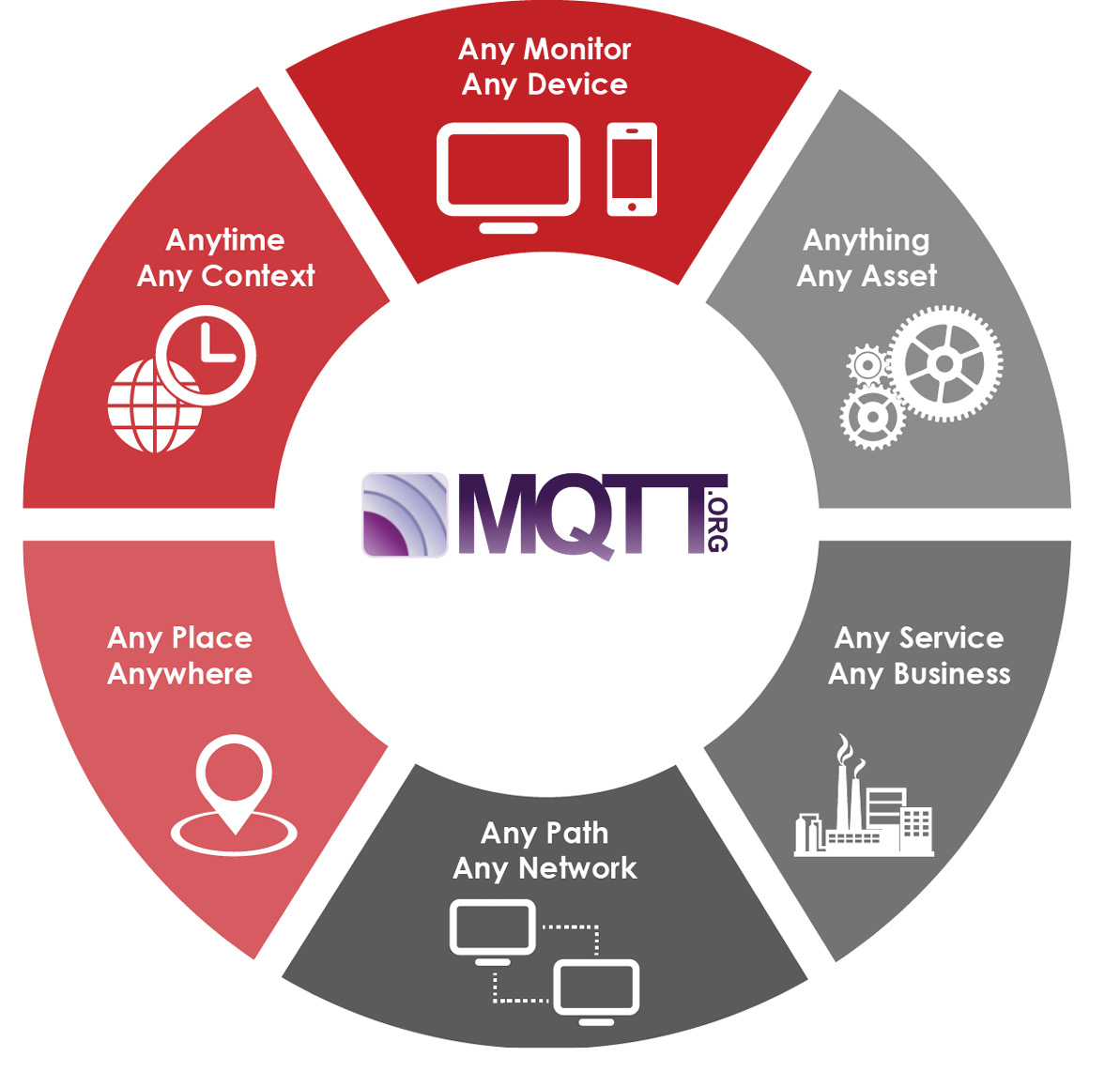
Photo Credit: www.opensourceforu.com
MQTT has been a staple messaging protocol since 1999 on its first release. IBM developed this protocol that packages messages and relays them over to connected devices. Servers and applications are the leading hardware that channels the MQTT protocol.
The initial use case for MQTT is through sensors on oil pipelines. The sensors interface with a satellite network to communicate. Over the years, MQTT evolved into newer versions that are standardized for broader usage and acceptance.
- 1999: IBM developed the initial version of MQTT
- 2014: MQTT became under OASIS, which facilitated the standardization of protocol. This gave birth to the MQTT version 3.1.1
- 2016: The ISO (International Organization for Standardization) lay down MQTT as ISO/IEC 20922:2016
How Does MQTT Work?
Considered as a binary protocol, MQTT following a publish-subscribe pattern. The combination of MQTT and IoT enables such a pattern to communicate between devices. As such, there are specific roles at play in this process.
- The server and broker function as the focal point of clients. Communication is done through a local network or the internet.
- A publisher is considered the client in the protocol. They are the ones who create the message and acts to publish it under specific topics.
- A subscriber is also referred to as a client, but ultimately, the message’s receiving end depends on the subscribed topic.
There are instances that both publishers and subscribers can take on the same role. In other cases, the two can swap parts. The number of clients is directly proportional to a server’s capacity.
How Does MQTT Communicate?
There is an array of topics to which a client can subscribe and publish. Each topic has its corresponding subtopics. Topics will also constitute levels. Transmission of messages is done through a packet format. A packet incorporates the following:
- Fixed header: A fixed header indicates the control header and the packet size as an essential piece of the packet.
- Variable header: This packet part is optional. A variable header consists of more information that may vary in size as well.
- Payload: The payload will include the more significant message part. Part of it may consist of commands, data exchange, and sensor values.
MQTT and IoT is a feasible setting because the former can be interoperable in many devices. Such interoperability is the primary feature of IoT that will be maximized in many use cases.
IoT Applications with MQTT Use Case
The MQTT protocol is a staple for many IoT applications. Because of its lightweight and lesser bandwidth consumption, a great deal of IoT incorporates it into their system.
- IBM Watson IoT Platform
The platform service of IBM is an IoT messaging device for data management. Using MQTT, secured communication is attained. The key areas covered by the platform include:
- Connection management to control IoT devices
- Data management for data review and analysis
- Risk management to provide better access controls for users
The MQTT in the platform service harnesses the client libraries, information, and samples to integrate any application and device to the platform service.
- Amazon Web Services
The Amazon IoT supports devices that use the MQTT protocol. Moreover, the AWS IoT also supports the MQTT Quality of Service levels 0 and 1. That being said, messages in AWS can be sent at least one time.
- Microsoft Azure IoT Hub
When connecting a device to an IoT hub, the MQTT protocol can be feasible in Azure IoT. There are two options to proceed with the connection:
- Azure IoT SDKs Libraries
- MQTT protocol
MQTT Alternatives
While MQTT is a cost-efficient route that provides a good message relay within an IoT option, there are also viable alternatives. In the context of protocol limitation, alternative ways are best to cover the MQTT gaps.
- HTPP
- If one has no problem with network connectivity, HTTP is a feasible communication option. As a web protocol, the communication channel is through a web browser. Typically used together with HTML, it follows a request/response model. The essential message topics for HTTP are URI and QRL. Once a client relays a request to the server, the server will prompt a response. The server will determine the message size limit also. Compared to MQTT, HTTP is more on the heavy side as it is derived to be a text protocol. As a text protocol, it follows a bigger message size and higher overhead.
- CoAP

- Constrained Application Protocol (CoAP) is a binary protocol. It supports two modes of communication:
- Publish/subscribe
- Request/response
CoAP is commonly used together with HTTP as they can work with each other. In terms of message size and overhead, CoAP has the upper hand compared to MQTT. It has a smaller messaging size with minimum overhead. This protocol is mainly designed to function in a low resource capacity. Hence, it is a feasible option if the priority is to reduce power and memory consumption.
- Constrained Application Protocol (CoAP) is a binary protocol. It supports two modes of communication:
- AMQP
- Advanced Message Queuing Protocol (AMQP) is an open messaging protocol designed best for ban systems. With a strong message delivery constitution, AMQP projects a higher overhand than MQTT.
However, in terms of memory consumption, AMQP is efficient in that realm. It does not take much RAM and CPU resources. But it still has a relatively higher consumption than MQTT. This can be derived from a more complex messaging packet,
Other IoT Protocol Option
Often, communication protocols are customized design to a specific objective. There are IoT systems that benefit from this clear-cut protocol architecture.
- STOMP
- Like HTTP, Simple or Streaming Text Oriented Message Protocol (STOMP) is a text protocol capable of relay messages. It uses a broker to do that. STOMP can support a wide variety of languages and platforms.
- DDS
- Data Distribution Service (DDS) is also a publish/subscribe protocol. They are widely feasible in larger-scale systems. Its real-time message delivery takes a cue from the Quality-of-Service levels similar to MQTT.
- XMPP
- Based on XML, Extensible Messaging and Presence Protocol (EMPP) also follows a publish/subscribe mechanism. This mechanism derives from client-server running over TCP and HTTP.
- SSE
- Using HTTP, Server-Sent Events is mainly utilized in one-way communication. This route follows server-to-client dynamics as part of HTML5.
- LwM2M
- Its most attractive feature allows interoperability with CoAP. The Lightweight M2M is lightweight and is an excellent alternative protocol covering constrained devices.
Monitoring Sensors As Fundamental MQTT Receptor
With MQTT becoming the standard for IoT messaging dynamics, it has long supported the monitoring technology industries. Many monitoring solutions such as sensors need a lightweight messaging protocol. The low bandwidth feasibility allows for a broader range of remote monitoring.
As the world’s largest supplier of sensor solutions, AKCP is at the forefront of streamlining its monitoring technologies. In this regard, AKCP integrated MQTT support on its sensorProbe+ products.
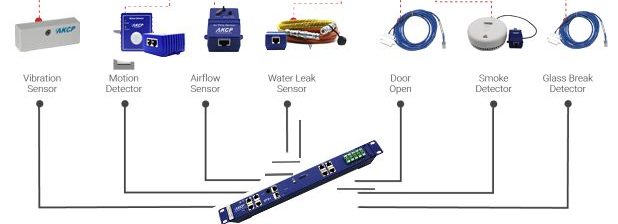
AKCP Environment Monitoring
AKCP sensorprobe+ acts as the client in the MQTT system. Through which message relay is enabled. Communication packets such as reading values from the AKCP array of environmental sensors are sent to the broker made available in the AKCPro server. The integration of MQTT to AKCP sensorprobe+ series facilitates third-party MQTT brokers. MQTT is also utilized as a communication platform to send relevant data to the AKCPRO server.
Connecting deployed AKCP sensors is easily harnessed through the IoT cloud services using MQTT. A concrete depiction of this system is evident with AKCP wireless sensor technology. The AKCP Wireless Tunnel Gateway is a dual-purpose communication that enables notification, control, and reporting of sensor values. MQTT supports such data relay at the helm. Using the protocol allows AKCP sensors to provide long-range, high penetration, and low power sensor communication.
A particular feature of the AKCP sensor is instant threshold broadcasting. The sensor broadcast alarms when sensor values change. Through analyzing data to check values that will ensure it does not exceed the programmed threshold. MQTT powers through this capacity to broadcast status changes.
A Well-Suited IoT Solution
It is no denying that MQTT streamlines IoT devices to perform better. As such, there are vital benefits that support this rationale:
- MQTT is a reliable messaging protocol ensuring message relay despite a connection.
- There is a fast response time.
- Capacity to scale up devices notwithstanding the bandwidth conditions.
- Many-to-many communications are achieved through the publish/subscribe mechanism.
- Sufficient history logs that are well documented.
Harnessing the scale-up potential of IoT devices means an excellent messaging protocol to support it along the way. This is where MQTT fits the bill.
Reference Links:
https://www.integrasources.com/blog/mqtt-protocol-iot-devices/
https://www.ibm.com/docs/en/watson-iot-platform?topic=devices-communicating-mqtt
https://docs.aws.amazon.com/iot/latest/developerguide/mqtt.html
https://docs.microsoft.com/en-us/azure/iot-hub/iot-hub-mqtt-support
https://www.verypossible.com/insights/what-is-mqtt-in-iot
https://www.prlog.org/12881088-akcp-supports-mqtt-on-sensorprobe-platforms.html

